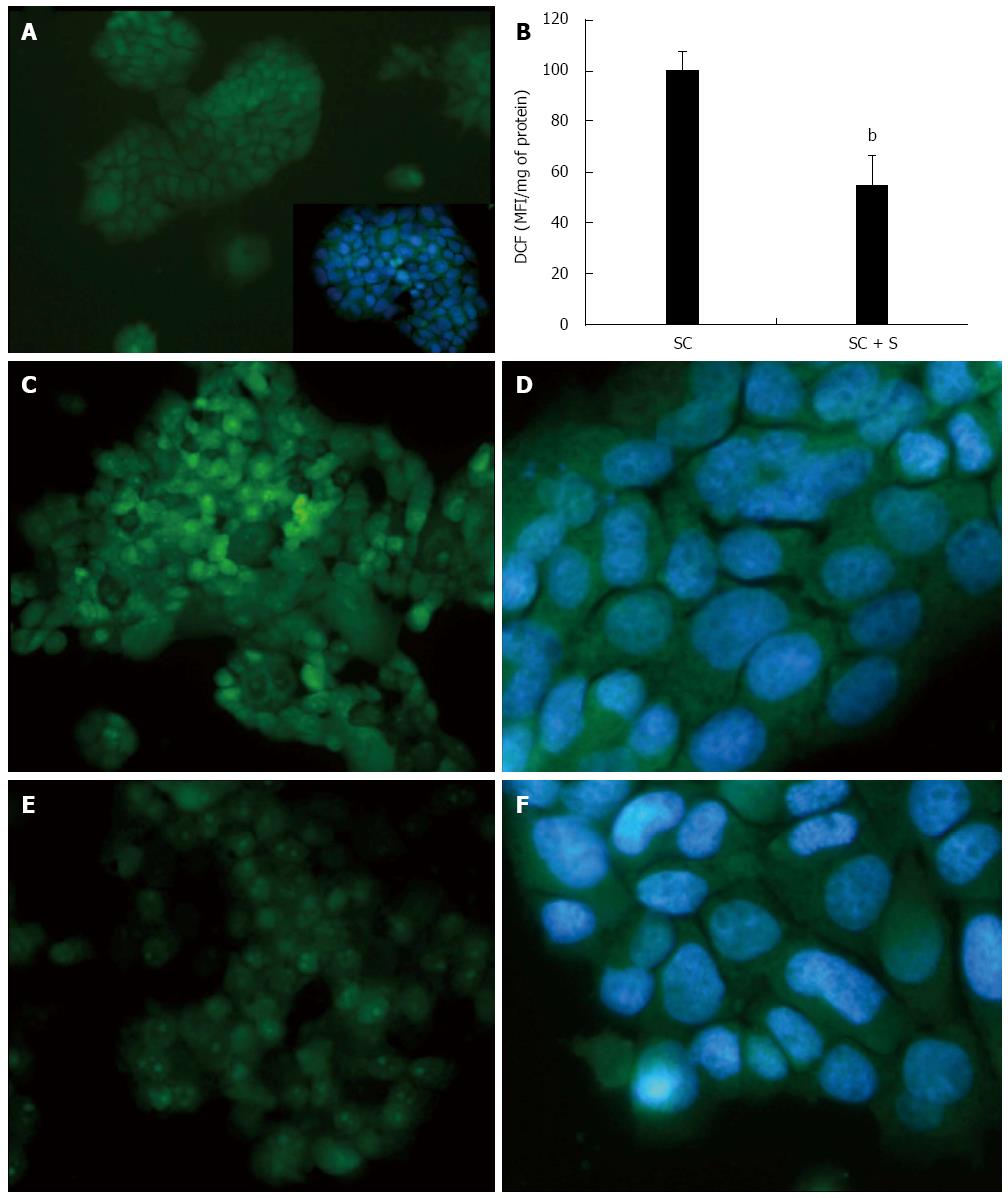Copyright
©The Author(s) 2016.
World J Gastroenterol. Jul 14, 2016; 22(26): 6016-6026
Published online Jul 14, 2016. doi: 10.3748/wjg.v22.i26.6016
Published online Jul 14, 2016. doi: 10.3748/wjg.v22.i26.6016
Figure 4 Effects of silybin on reactive oxygen species production.
The intracellular level of reactive oxygen species (ROS), mainly hydrogen peroxide, was visualized in situ by optical microscopy in control (A and inset) and steatotic FaO cells incubated in the absence (C and D) or in the presence (E and F) of silybin 50 μmol/L. The ROS level were also quantified by spectrofluorimeter assay of DCF-stained cells (B) and data are expressed as percent mean fluorescence intensity (MFI) relative to steatotic cells and normalized for total proteins. DCF: 2’-7’ dichlorofluorescein. bP < 0.001 SC vs SC + S
- Citation: Vecchione G, Grasselli E, Voci A, Baldini F, Grattagliano I, Wang DQ, Portincasa P, Vergani L. Silybin counteracts lipid excess and oxidative stress in cultured steatotic hepatic cells. World J Gastroenterol 2016; 22(26): 6016-6026
- URL: https://www.wjgnet.com/1007-9327/full/v22/i26/6016.htm
- DOI: https://dx.doi.org/10.3748/wjg.v22.i26.6016









